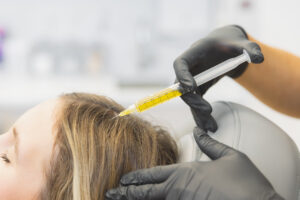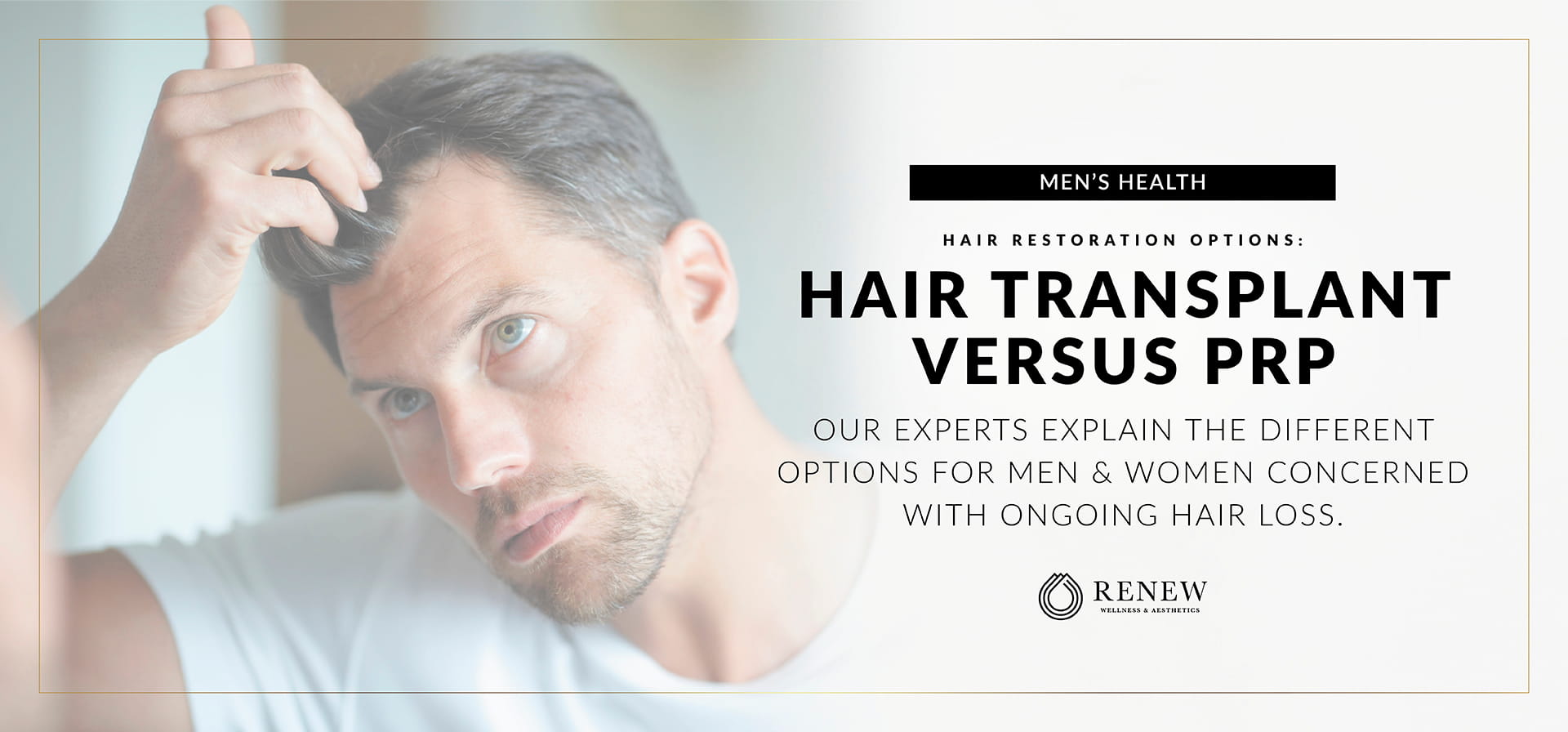Both men and women can be affected by hair loss. A huge number of people are seriously concerned about their ongoing hair loss, and their mental health is suffering as a result. For this reason, it has become increasingly common to undergo treatment to restore hair. The options are limited however. To date, the most common hair restoration methods have been:
- Hair transplant
- Platelet Rich Plasma Therapy
Platelet Rich Plasma Therapy
Platelet-rich plasma (PRP) is a therapy that is designed to restore hair previously lost. The three-step medical procedure is a relatively simple process whereby an individual’s blood is taken, processed, and reinjected back into the scalp to stimulate hair regrowth. Platelet-rich plasma therapy is a form of regenerative medicine.
It is believed that the injections not only kick natural hair growth into action, but the shaft of the hairs growing back are thicker. The injections also help to maintain the blood supply to the new follicles.
- Drawing Blood: There is nothing complex about this aspect. Blood is drawn traditionally, usually from the arm.
- Separate Components of Blood: Once drawn, the blood is placed in a centrifugal machine to separate its components. The centrifugal machine causes the blood to separate into three distinct layers; platelet-poor plasma, platelet-rich plasma, and red blood cells.
- Inject Into Scalp: This procedure is concerned only with the platelet-rich plasma, which is then injected into the areas of the scalp where the individual is hoping to restore hair.
PRP is a relatively new technology for hair restoration but has been used to treat injured tendons, ligaments and muscles for decades now.
PRP for Hair Loss Study
A 2014 study confirmed that there is sufficient evidence to support PRP to restore hair. Eleven patients who had suffered hair loss due to Androgenic Alopecia and had been unresponsive to treatment for six months were injected with PRP. Four treatments at two-week intervals were given. After three months, the patients were assessed using clinical examination, photos, patient satisfaction, and a patient hair pull test.
The results noted a significant reduction in hair loss, with the hair count increasing from an average of 71 follicles to 93 follicles with high patient satisfaction. The study concluded that PRP therapy represented a simple, safe and low-risk method for treating hair loss.
Side Effects and Risks of PRP Hair Restoration
There are relatively few side effects associated with PRP, which makes it a great alternative to a hair transplant. The most common include:
- Bruising at the site of injection
- Scar tissue
Although the risk is relatively low, many treatment providers will not treat those taking blood thinners, heavy smokers, or a history of alcohol or drug abuse. Other conditions that should be disclosed include cancer, chronic liver disease, chronic skin diseases, metabolic disorder, low platelet count, and thyroid disease.
PRP for Hair Loss Treatment
Under a normal treatment regime, an individual receives three treatments spaced four to six weeks apart, with one maintenance treatment every six months.There is significant variance in the cost with the initial three treatments between $1,500 to $3,000 and the maintenance treatment $600+.

Hair Transplant OKC
The alternative to PRP is a hair transplant. A hair transplant is when a plastic surgeon or dermatologist moves hair from the back or sides of the scalp to the front or top of the head. There are two types of hair transplant:
- Slit grafts which contain four to ten grafts per slit
- Micro grafts which contain one to two grafts per slit
How does a Hair Transplant Work
There are two main techniques used to obtain the follicles used for transplant:
- Follicular Unit Transplantation: The surgeon cuts a strip of skin up to several inches long from the back of the head. Stitches close the wound. The surgeon will then separate the strip into small sections that are implanted to create a natural look.
- Follicular Unit Extraction: Small holes are made in the area receiving the transplant. The surgeon will then place hairs in these holes. One treatment can involve over one thousand hairs. The wounds are bandaged for several days.
Following the transplant, the recipient will often need to take pain medication, antibiotics to reduce the risk of infection, and anti-inflammatories to reduce swelling.
Common hair transplant complications include:
- Bleeding
- Infection
- Swelling
- Bruising around eyes
- Scalp numbness or loss of sensation
- Itching
It should also be noted that hair transplants can, on some occasions, result in an unnatural appearance.
Hair Transplant Treatment
A typical session can take up to four hours, and sometimes three to four sessions are required to achieve the required result. The wounds need to heal following one session before the next session can occur, meaning sessions are often several months apart.
Hair Transplant Cost OKC
Hair transplants typically cost between $4,000 and $15,000 to complete.
Comparison Between PRP and Hair Transplant
When the procedure for each of these treatments is evaluated, it is clear that PRP offers some real advantages over hair transplants, namely:
- PRP is a completely natural process
- There is no surgery involved
- There is no recovery time
- It is more cost-effective
Those who are candidates for a hair transplant would, in all likelihood, meet the criteria for PRP treatment. Oftentimes, PRP is used as an adjunct treatment for those who have already undergone hair transplant.
PRP in Oklahoma City
Renew Wellness & Aesthetics in Oklahoma City has the local experts in PRP treatments. If you are considering a hair transplant, give Renew a call or book a free consultation online where we can discuss your options with you and come up with a solution to restore your hair to that of your youth.

